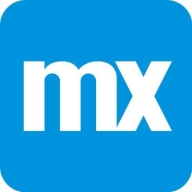

Find out what your peers are saying about OutSystems, Mendix, Salesforce and others in Mobile Development Platforms.
It's not that they're really firing that personnel, but they can often focus on the core that really matters instead of repetitive processes in Excel forms and all of the overhead and human error that comes with that.
I see a fair return on investment using Mendix.
With OpenShift combined with IBM Cloud App integration, I can spin an integration server in a second as compared to traditional methods, which could take days or weeks.
Moving to OpenShift resulted in increased system stability and reduced downtime, which contributed to operational efficiency.
It is always advisable to get the bare minimum that you need, and then add more when necessary.
I haven't often needed to seek direct support from Mendix teams as their online resources and knowledge database are comprehensive.
Mendix provides proper support, troubleshooting options, and a helping community.
If it's about having an issue that I can't solve despite being a Mendix expert and having tried every single bit and piece, support can feel like a stone wall.
Red Hat's technical support is responsive and effective.
I have been pretty happy in the past with getting support from Red Hat.
Red Hat's technical support is good, and I would rate it a nine out of ten.
Mendix supports scaling well with its comprehensive online documentation and learning paths.
Mendix provides options for handling scalability and maintainability through features like validation, workflow and nanoflow minimization, and user components, enabling projects to be easily managed and scaled.
Also solutions processing data at scale, talking about one million packages a day.
The on-demand provisioning of pods and auto-scaling, whether horizontal or vertical, is the best part.
OpenShift's horizontal pod scaling is more effective and efficient than that used in Kubernetes, making it a superior choice for scalability.
Red Hat OpenShift scales excellently, with a rating of ten out of ten.
Mendix has been stable in my experience, with reliable performance for enterprise applications and minimal downtime or critical issues.
I recently encountered an issue with deploying applications on the Mendix sandbox, which took a week to resolve.
It provides better performance yet requires more resources compared to vanilla Kubernetes.
I've had my cluster running for over four years.
It performs well under load, providing the desired output.
Access to the database is limited in Mendix's public cloud, preventing direct database interaction or inspection.
I choose a seven mainly due to the issues we've faced with slowdowns and bugs during development, while runtime has been very stable.
Native development is not very strong, and some developer tools are missing, such as shortcuts to edit multiple variables.
Learning OpenShift requires complex infrastructure, needing vCenter integration, more advanced answers, active directory, and more expensive hardware.
Red Hat OpenShift's biggest disadvantage is they do not provide any private cloud setup where we can host on our site using their services.
We should aim to include VMware-like capabilities to be competitive, especially considering cost factors.
The app license costs between $13,000 to $14,000, which is prohibitive for startups.
My experience with pricing, setup cost, and licensing is reasonable;
From the pricing shown on the Mendix webpage, we have a basic package where you pay 60 Euros a month for five users and 10 Euros per additional user.
Initially, licensing was per CPU, with a memory cap, but the price has doubled, making it difficult to justify for clients with smaller compute needs.
Red Hat can improve on the pricing part by making it more flexible and possibly on the lower side.
The cost of OpenShift is very high, particularly with the OpenShift Plus package, which includes many products and services.
Mendix's integration capabilities are impressive, allowing for rapid and on-the-fly integration of almost anything imaginable.
The best features that Mendix offers are proper guardrails that prevent starting from scratch, ensuring a certain level of security, user experience, and standardization for implementing workflows, API integrations, and how you set up your domain model.
For security, I value the built-in authentication, role-based access control, and data protection features, which make enterprise apps safer without needing heavy custom setup.
Because it was centrally managed in our company, many metrics that we had to write code for were available out of the box, including utilization, CPU utilization, memory, and similar metrics.
The concept of containers and scaling on demand is a feature I appreciate the most about Red Hat OpenShift.
A valuable feature of Red Hat OpenShift is its ability to handle increased loads by automatically adding nodes.
| Product | Market Share (%) |
|---|---|
| Mendix | 13.6% |
| OutSystems | 14.7% |
| Temenos Quantum | 7.9% |
| Other | 63.800000000000004% |
| Product | Market Share (%) |
|---|---|
| Red Hat OpenShift | 6.4% |
| Azure Stack | 22.0% |
| VMware Cloud Foundation | 18.9% |
| Other | 52.7% |


| Company Size | Count |
|---|---|
| Small Business | 26 |
| Midsize Enterprise | 6 |
| Large Enterprise | 23 |
| Company Size | Count |
|---|---|
| Small Business | 17 |
| Midsize Enterprise | 4 |
| Large Enterprise | 40 |
Mendix is a low-code application development platform that helps your organization accelerate its application development lifecycle. The solution is designed to enable you to create software faster by abstracting and automating the development process for better business outcomes at speed and scale. Mendix has many key capabilities, including a tailored IDE for every developer, built-in collaboration tools for team development, feedback management, agile project management, the ability to build a truly responsive design across devices, and much more.
Mendix Features
Mendix has many valuable key features. Some of the most useful ones include:
Mendix Benefits
There are many benefits to implementing Mendix. Some of the biggest advantages the solution offers include:
Reviews from Real Users
Below are some reviews and helpful feedback written by PeerSpot users currently using the Mendix solution.
PeerSpot user Somnath G., Solution Architect and LowCode Practice Lead at a tech services company, says, "What I found most valuable in Mendix is that it's very much suitable for mobile apps such as native Android or IOS supported mobile apps. The multiple features of the platform are very, very attractive and very popular. Mendix has technical features such as microflows and nanoflows. You can also access data models in the platform. These are the features that are very, very strong in Mendix. I got my hands dirty on other low-code platforms, but I have not seen such strong features in them compared to the microflows, nanoflows, and data model access that are in Mendix, including creating and integration. The platform has out-of-the-box adapters or out-of-the-box-connectors that you can integrate with different interface applications such as SAP, Salesforce, Oracle EBS, etc."
Sameer V., Consulting Manager at Deloitte, mentions, “Their native mobile capability is very good. In general, the way they launch the product has been great. Their product launching strategy is far better than any other platform. I work in OutSystems and Mendix. They tend to be more on the legacy side, OutSystems. With this solution, the product launching strategy is very, very agile. I really like when they roll out their updates, which are very, very frequent.”
Robert B., Solutions Architect at a computer software company, explains, The solution is just very quick and responsive. The initial setup is very straightforward, and those implementing the product do not have to be very technologically advanced in order to manage the process.”
Red Hat OpenShift offers a robust, scalable platform with strong security and automation, suitable for container orchestration, application deployment, and microservices architecture.
Designed to modernize applications by transitioning from legacy systems to cloud-native environments, Red Hat OpenShift provides powerful CI/CD integration and Kubernetes compatibility. Its security features, multi-cloud support, and source-to-image functionality enhance deployment flexibility. While the GUI offers user-friendly navigation, users benefit from its cloud-agnostic nature and efficient lifecycle management. However, improvements are needed in documentation, configuration complexity, and integration with third-party platforms. Pricing and high resource demands can also be challenging for wider adoption.
What are the key features of Red Hat OpenShift?Red Hat OpenShift is strategically implemented for diverse industries focusing on container orchestration and application modernization. Organizations leverage it for migrating applications to cloud-native environments and managing CI/CD pipelines. Its functionality facilitates efficient resource management and microservices architecture adoption, supporting enterprise-level DevOps practices. Users employ it across cloud and on-premises platforms to drive performance improvements.
We monitor all Mobile Development Platforms reviews to prevent fraudulent reviews and keep review quality high. We do not post reviews by company employees or direct competitors. We validate each review for authenticity via cross-reference with LinkedIn, and personal follow-up with the reviewer when necessary.